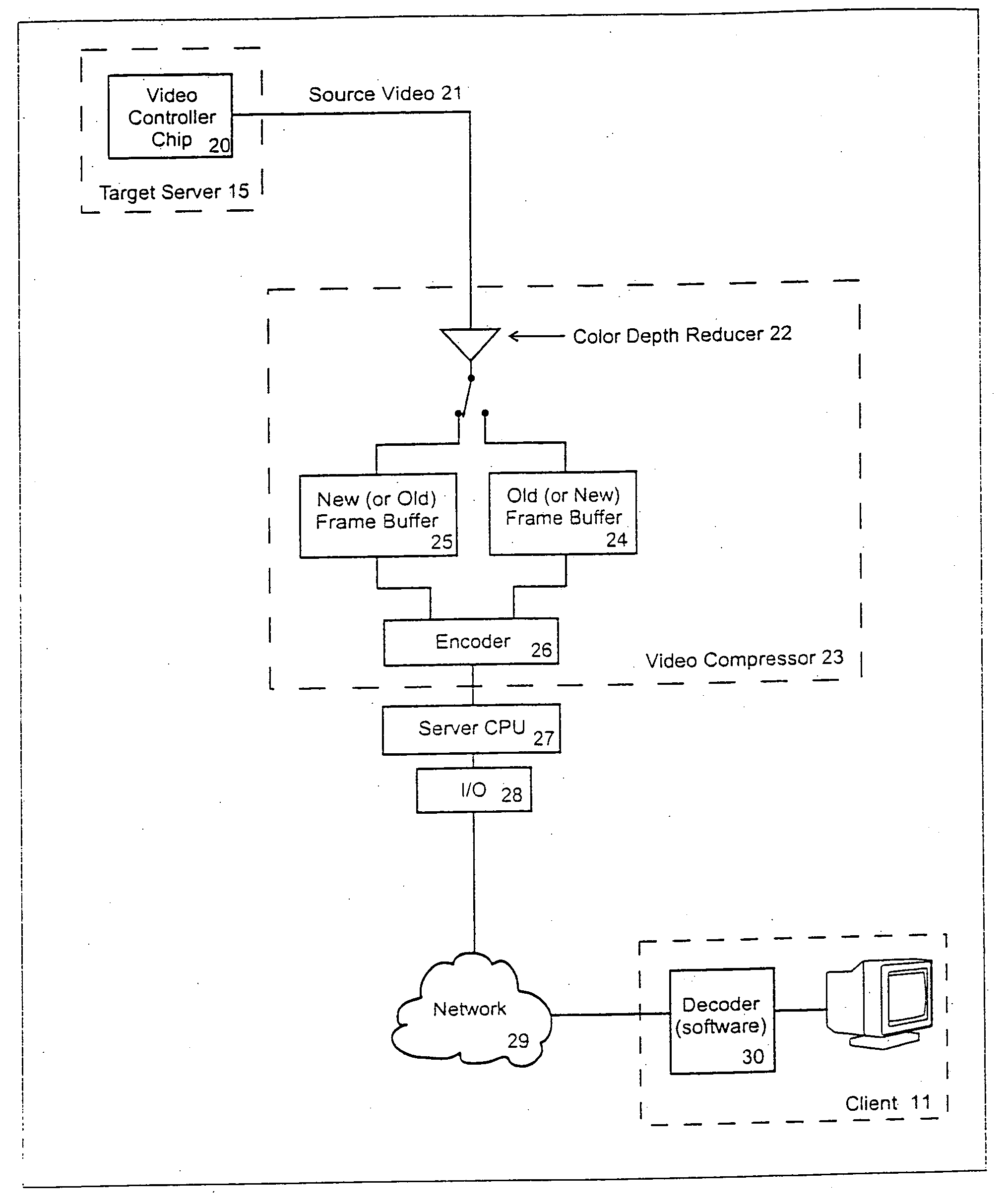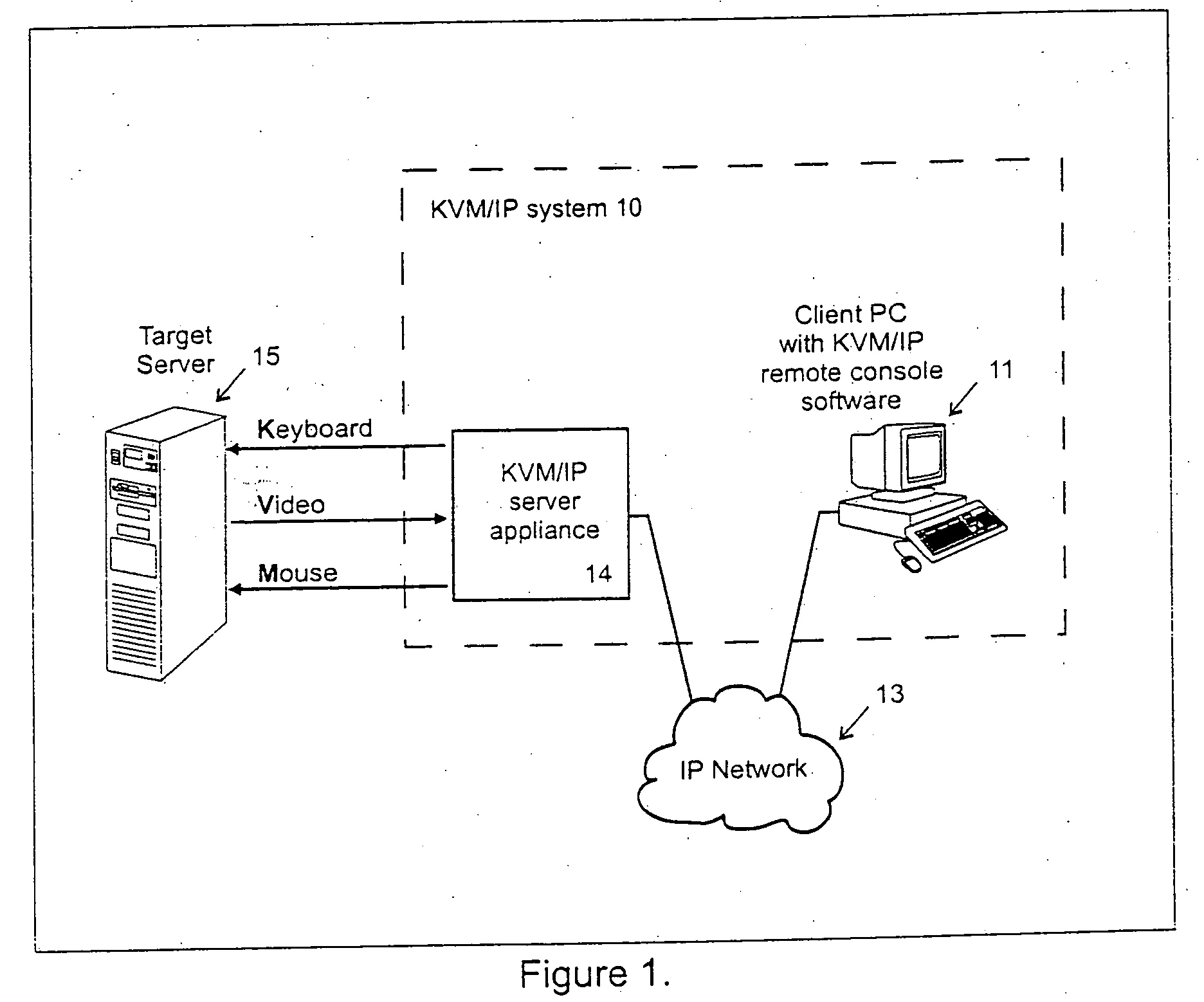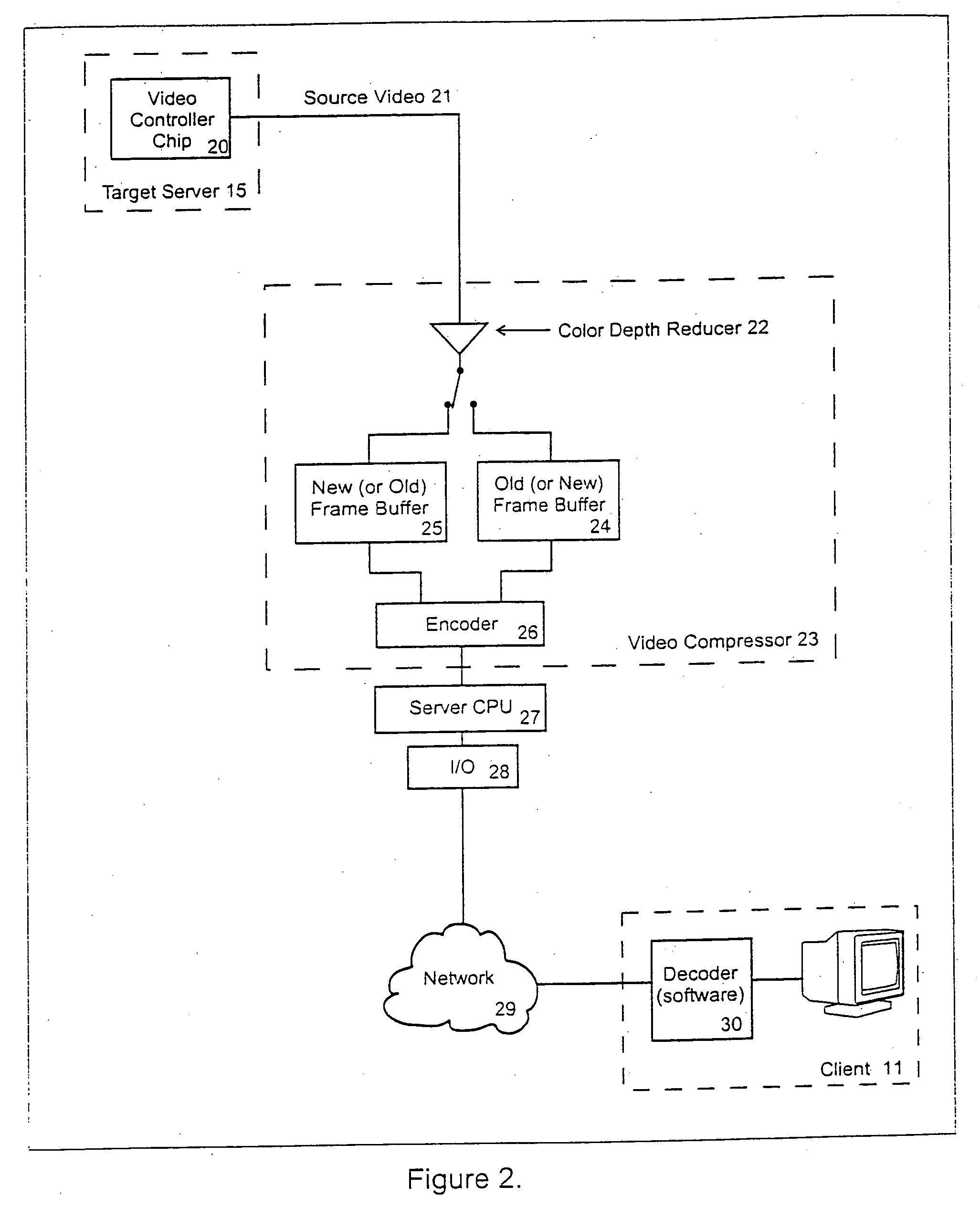Video compression system
a video compression and video technology, applied in the field of computer data processing, can solve the problems of imposing different amounts of delay, serious problems, and sending too much data for the communication channel with resolution loss, and achieve the effect of reducing delay and maximizing compression of captured video
- Summary
- Abstract
- Description
- Claims
- Application Information
AI Technical Summary
Benefits of technology
Problems solved by technology
Method used
Image
Examples
Embodiment Construction
[0034] The present invention can be implemented with any hardware or software that aims to send computer video over a communication channel, including over an intervening network. One such example embodiment is shown in FIG. 1, which is described by way of example rather than limitation. Indeed other embodiments will be understood once the artisan reviews the invention, as embodied in the appended Figures and described herein.
[0035] In FIG. 1, the KVM / IP system 10 includes a remote console client 11 and a server appliance 14. In the embodiment shown, the remote console 11 is implemented with PC software in a network-ready PC (which includes a keyboard, video display and mouse). The client 11 communicates via an Internet Protocol network 13, to a target server 15 via the KVM / IP appliance 14. The appliance 14 and the client 11 include standard network I / O hardware and software to permit them to communicate via any form of Internet protocol connectivity, such as a dial-in, DSL, WAN, L...
PUM
 Login to View More
Login to View More Abstract
Description
Claims
Application Information
 Login to View More
Login to View More - R&D
- Intellectual Property
- Life Sciences
- Materials
- Tech Scout
- Unparalleled Data Quality
- Higher Quality Content
- 60% Fewer Hallucinations
Browse by: Latest US Patents, China's latest patents, Technical Efficacy Thesaurus, Application Domain, Technology Topic, Popular Technical Reports.
© 2025 PatSnap. All rights reserved.Legal|Privacy policy|Modern Slavery Act Transparency Statement|Sitemap|About US| Contact US: help@patsnap.com



